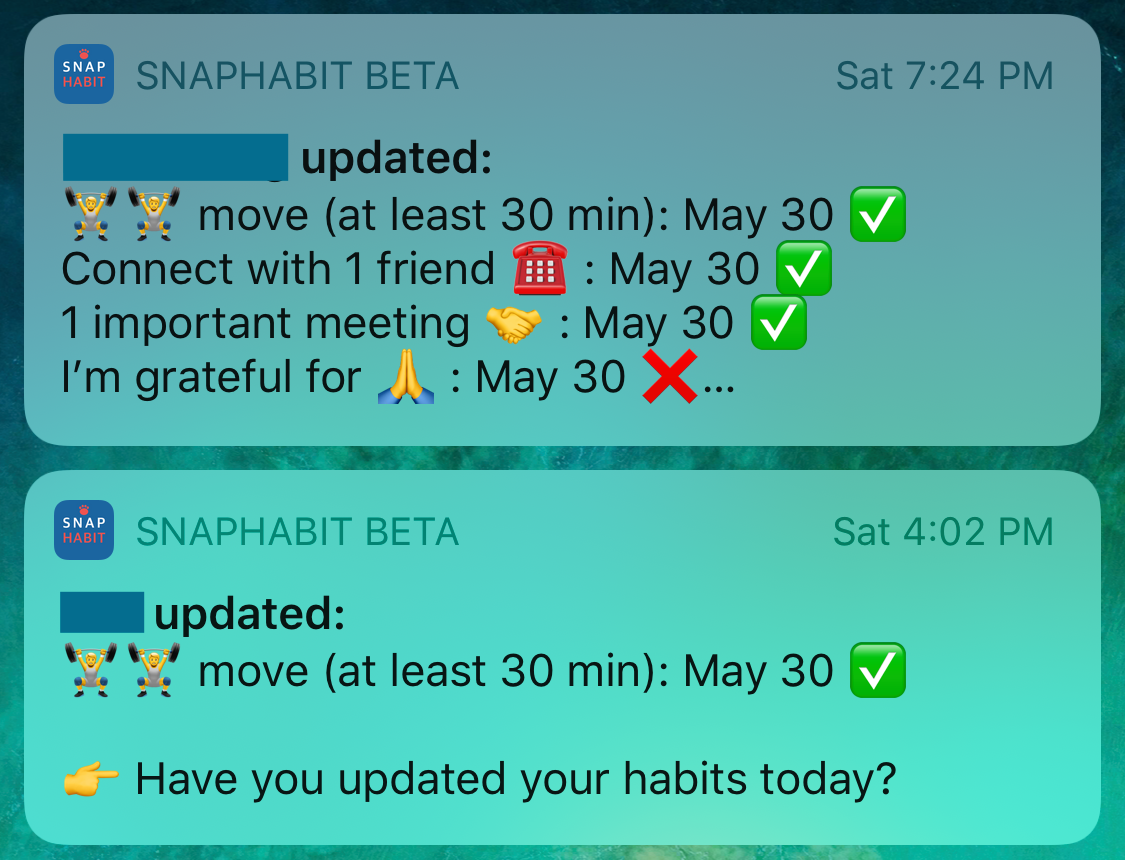A case study of our notification settings revamp
When you update a habit on SnapHabit, your friends get a silent notification about your update.1 Our hypothesis around this feature was that everyone has a few supportive family members and friends who want to hear daily updates about their life.
While hopefully encouraging friends to motivate each other, we quickly got feedback that these notifications could be overwhelming for some. In this post, we walk through the framework we used to redesigned our notifications settings to give users more control.
- User Feedback
- Data analysis
- Inspiration from other apps: don't assume others know what they are doing!
First, some quick context
SnapHabit aims to be the best place to share your habits with friends and family, giving you the tools like chat, group habits, and status updates to hold each other accountable in meeting your goals.
SnapHabit has a simple sharing model: share a habit with your friend and they can see your habit and get notifications whenever you check in (and previously, when you didn't).
We had an opt out setting per friend, but it was 3 navigation screens deep.

1. User Feedback
All product decisions need to be based on your users. Listen to your users!
Sometimes, this is harder than you'd think. Emails to 20 users + the promise of $20 Amazon Gift Cards = 4 responses!
... some people loved the notifications:
"It's a forcing function to stay in touch with my brother"
...other people liked them at first but then reached notification blindness.
I liked them for the first week, now I don't read them anymore.
Other people only wanted updates for habits they were participating in. Some users were already throttling notifications but had even more specific requests like only wanting notifications with specific content.
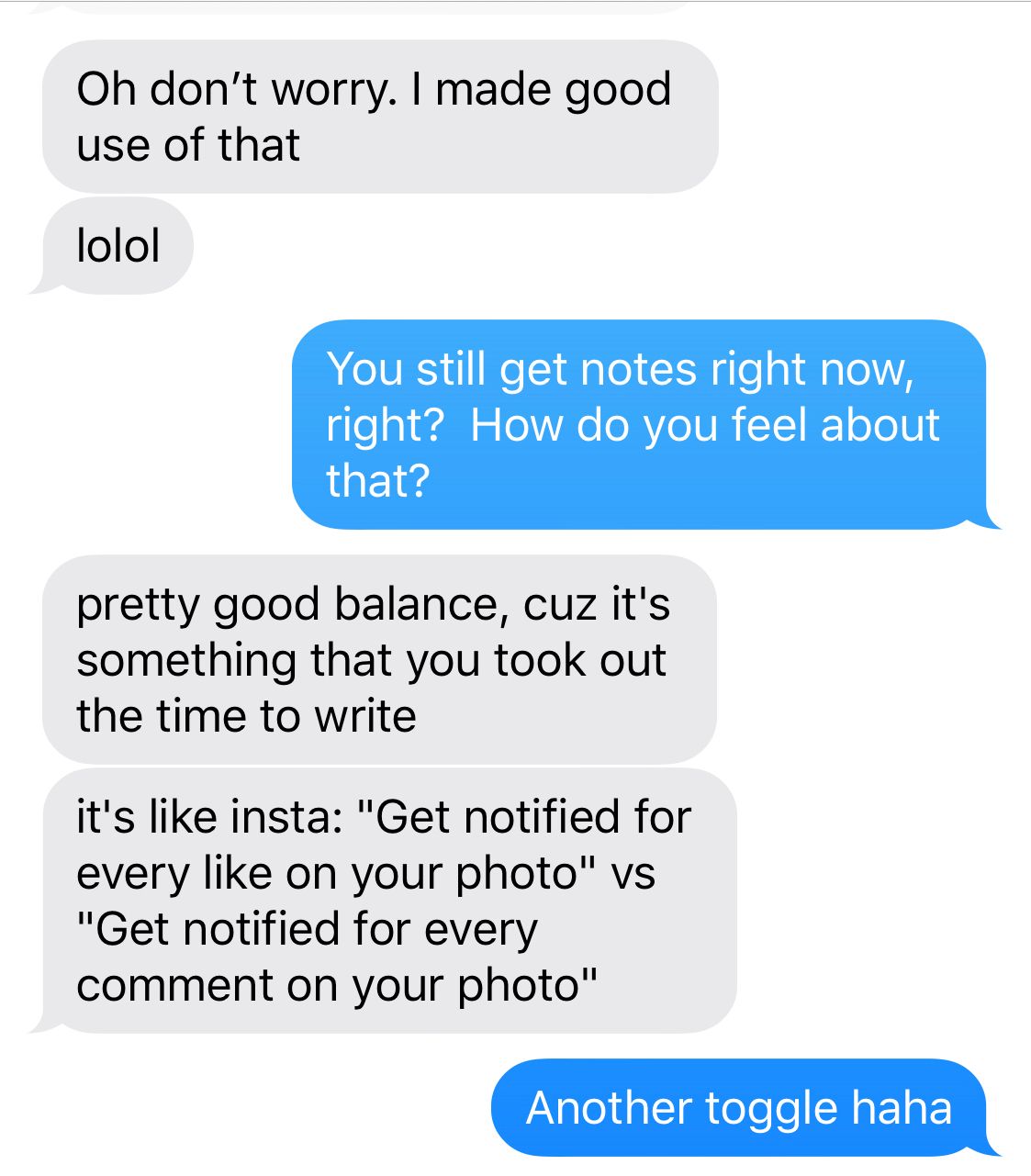
2. Data Analysis
As valuable as user feedback is, sometimes what people say doesn't always align with how they behave, so it's important to dive into actual usage.
There are 450 "friend connections" on SnapHabit. 77% (347 users) have notifications updates set to "All" and 23% opted out of notifications.
...is a 23% opt-out rate a lot, or a little?
Opting out requires work—opening the app and navigating to find the setting. So while most users still have notifications on, I see 23% and think we have room to improve.
3. Inspiration from other apps
The user feedback and data analysis matched our intuition: we should provide additional notification controls. Control settings are a tough balance: how do you provide a simple interface that's flexible enough to meet a variety of user preferences?
What other apps have similar “ambient” notifications?
HouseParty
HouseParty sends you a notification whenever a friend opens the app. Given the "ambient" nature of the product, these notifications are crucial to their success.
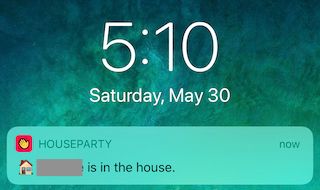
Notifications are such a critical part of the HouseParty experience that their team must have perfected the settings screen. Why not just copy them? But after some analysis...
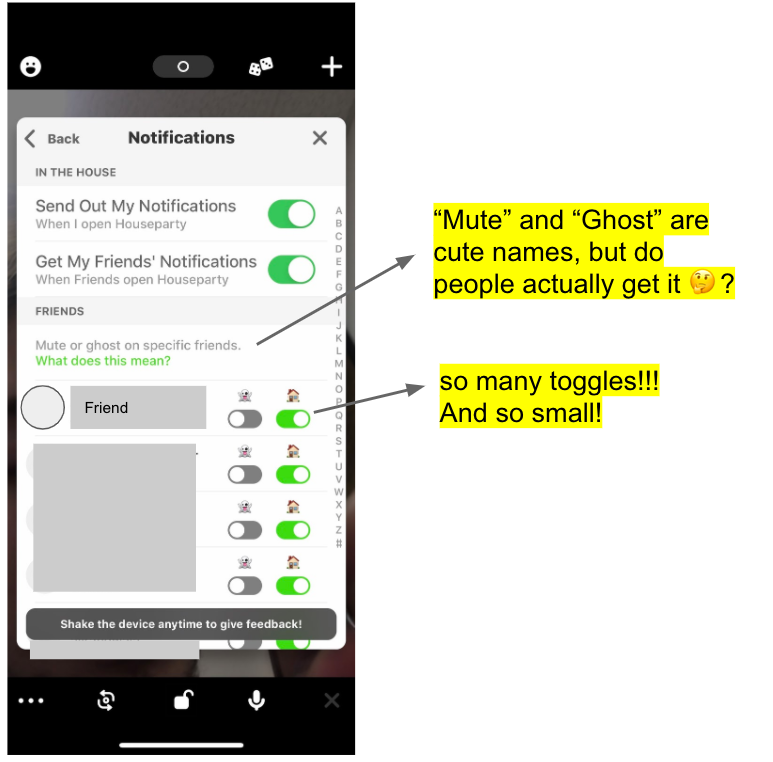
... by May 1, they had a new design.
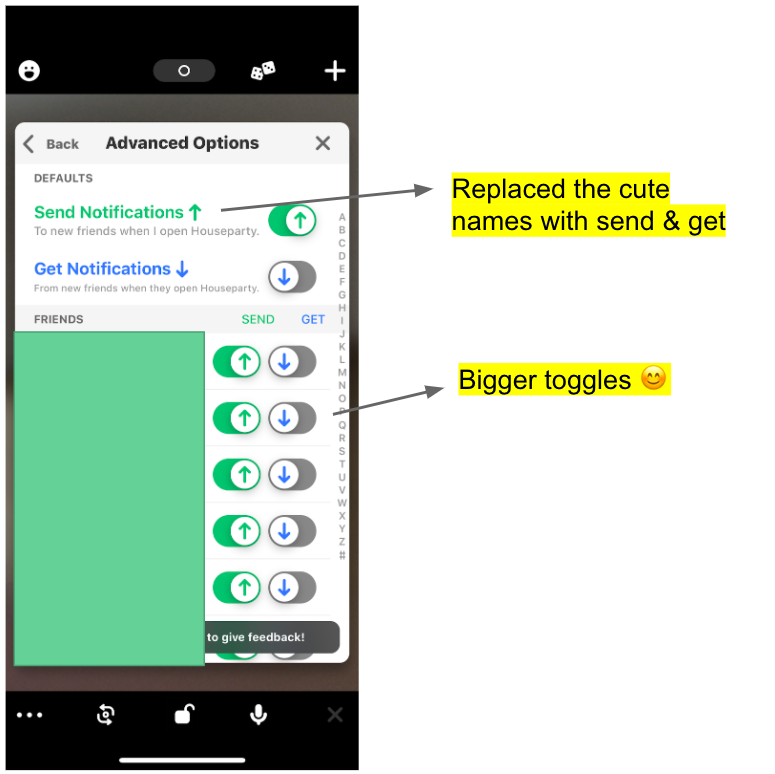
Lesson: Take inspiration from other apps, but don't blindly copy what their designs. They don't necessarily know what they are doing either 😜.
SnapChat
SnapChat similarly is heavily reliant on notifications, famously notifying users before they even finished their messages...

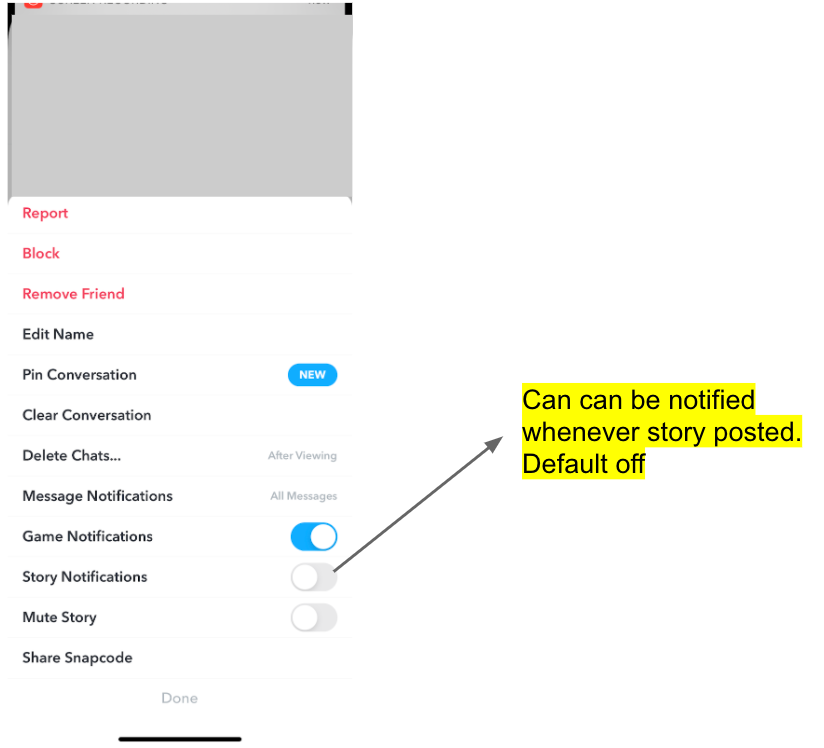
Decision
Based on inspiration from other apps, user feedback, and data analysis, we made the following changes to the app:
- Create a global notification settings page, where users can quickly choose settings for each friend.
- Add a "third" notification state: Highlights. In addition to "Never" and "Always", users can opt to receive only habit updates with content or occasional updates.
This was just a V1 change–and we'll run the metrics again in a few weeks. Thanks for reading!
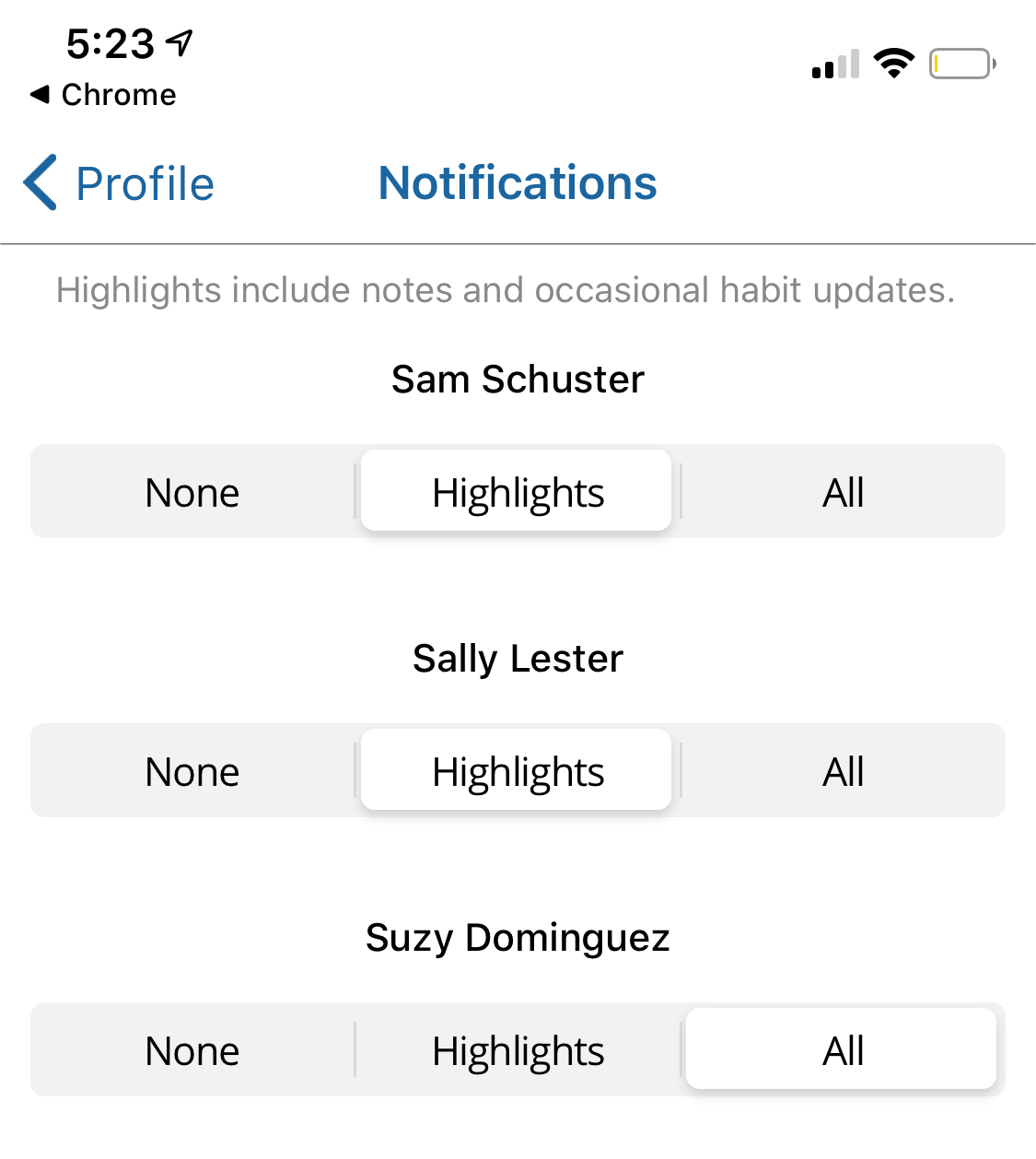
Don't have SnapHabit yet? You can download the app on iOS here and Android here.
1 We have a four-hour default backoff (notified a maximum of once every four hours)


